My home town of Santa Cruz made national news the other day, 23 December 2024, when a series of massive swells caused part of the Municipal Wharf to collapse into the ocean. People in the restaurants and other businesses had to evacuate immediately, and three people were dropped into the water of Monterey Bay (they were all rescued safely and no human lives were lost). The bathroom building fell into the water and washed up on the beach at the mouth of the San Lorenzo River. Almost immediately, memes appeared, advertising a 2-bathroom unit with both river and ocean views, renting for $6000/month. Given the exorbitant rents here, you could argue that maybe this is a pretty good deal.
That afternoon, the same swell tore through the Santa Cruz Small Craft Harbor and replicated the damage done by the Fukushima tsunami in March 2011. The damaged docks had been replaced in 2014, but this recent damage ripped them up again. Boats and docks were thrown around and crashed into each other. An unknown amount of diesel fuel and gasoline were also “liberated” into the water.
My friend Murray has a little boat, Scherzo, that lives in the upper harbor on G dock. On the day of the worst swell, Murray had gone down to see how Scherzo was faring. At that point she had taken at least some cosmetic damage to her paint but didn’t seem to be taking on any water except rain water. The harbor patrol had closed all of the docks so he couldn’t get close enough to see if there were worse injuries. At one point another boat had come down the channel and gotten wedged under Scherzo so she was floating on top of it. Somebody rescued Scherzo and tied her up at a spot just under the ramp from her usual berth. Yesterday, Christmas Day, Murray called us to say that he was down at the boat and asked if Alex (my husband) could help him get her out of the water, as more big swells were forecast. I’m not very useful when it comes to boats, but I went along to watch things from above and hold lines and such.
Before they could take Scherzo out of the water, they had to make sure she was seaworthy enough to be driven down to the boat ramp at the lower harbor.
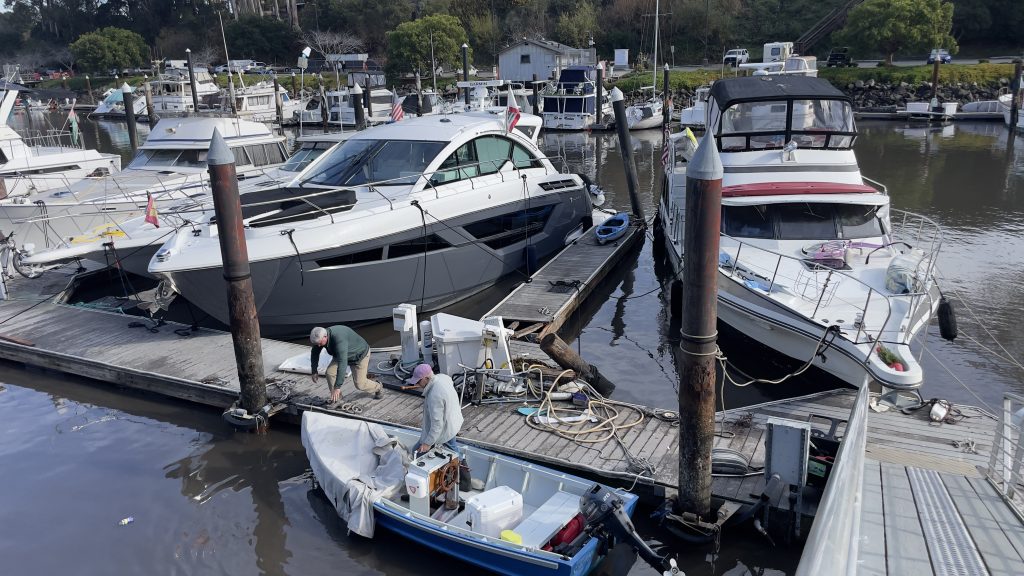
2024-12-25
© Allison J. Gong
Behind Murray, who is wearing the pink cap, you can see damage to the finger dock. And notice that the big boats aren’t sitting straight in their slips. Scherzo‘s usual spot is on the other side of the ramp; she got pushed under the ramp and a kind soul tied her up here.
This is the capsized boat that had gotten wedged under Scherzo. It was now stuck under the ramp, just in front of Scherzo‘s spot.
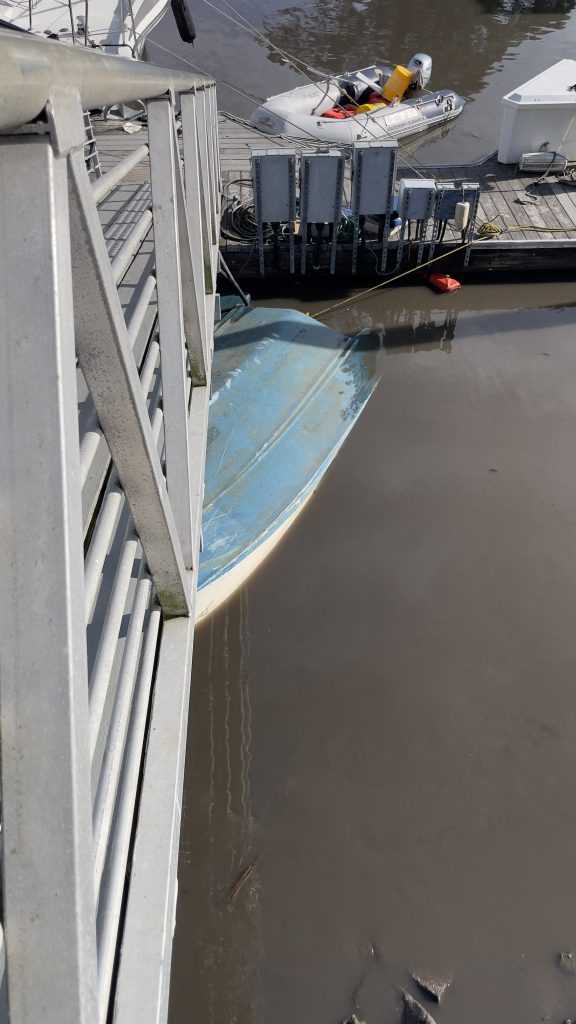
2024-12-25
© Allison J. Gong
Scherzo‘s engine started right up, and the boat itself having been deemed safe to drive by Alex the Engineer, Murray took her down the harbor slowly. Alex and I met him at the boat ramp.
While we were waiting, we noticed that some of the pilings from the busted-up Wharf, which is more correctly a pier rather than a wharf, had been hauled out of the water and set in the parking lot.
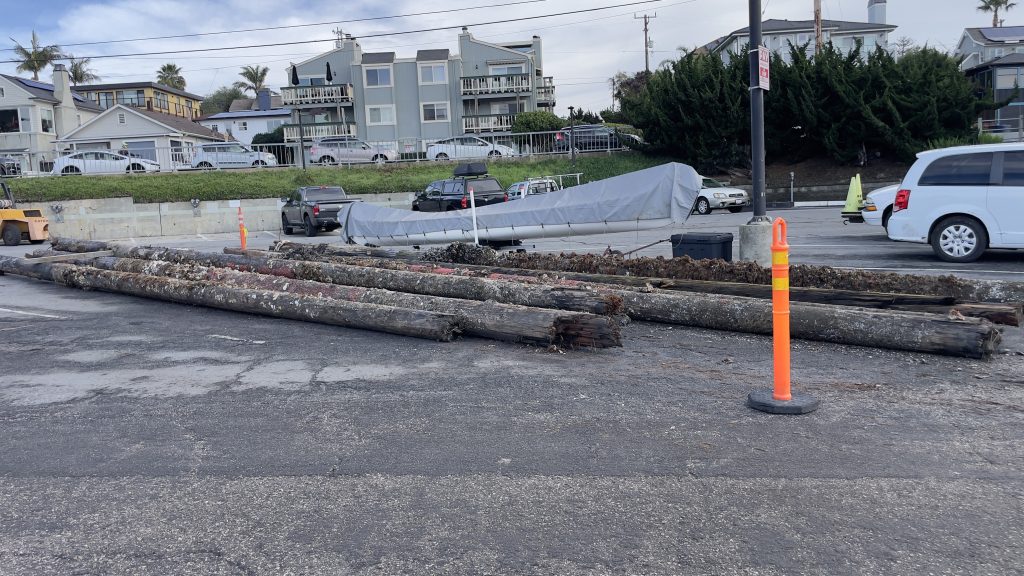
2024-12-25
© Allison J. Gong
Knowing that the biota on the pilings would be very similar to the critters I see in the rocky intertidal, I had to investigate. And it was very sad. Most of the animals had died waiting for a high tide that wouldn’t return. Some of the barnacles were still alive, albeit just barely so.
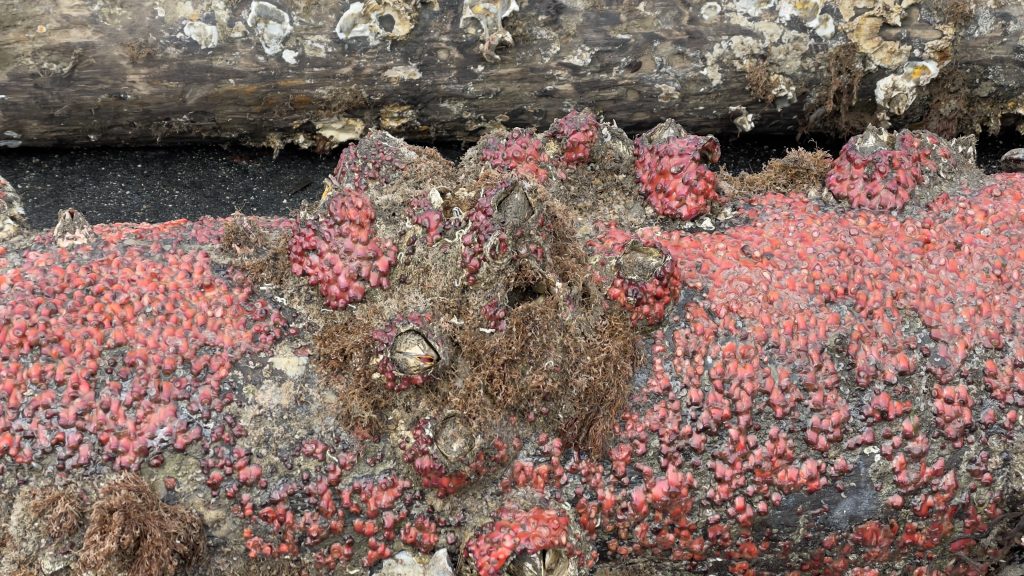
2024-12-25
© Allison J. Gong
Here’s a close-up shot of one of the big barnacles encrusted with other animals:
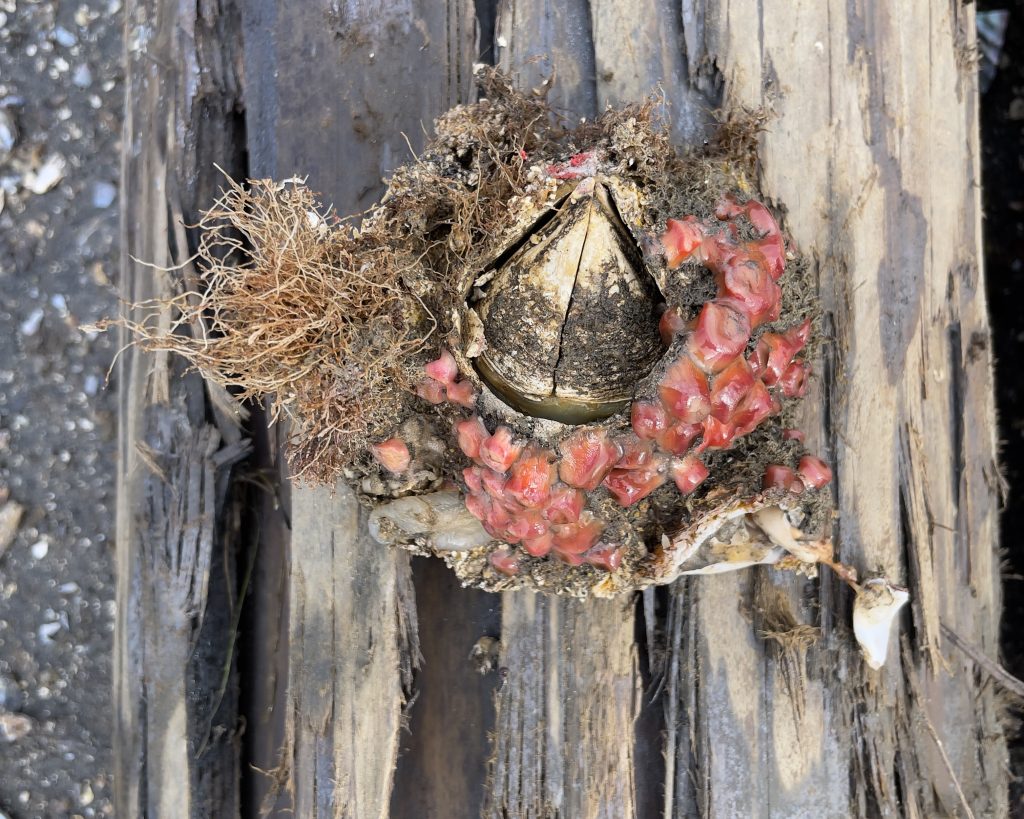
2024-12-25
© Allison J. Gong
There were many empty worm tubes, former homes of the beautiful Eudistylia polymorpha. I saw one dead worm that had fallen out of its tube:
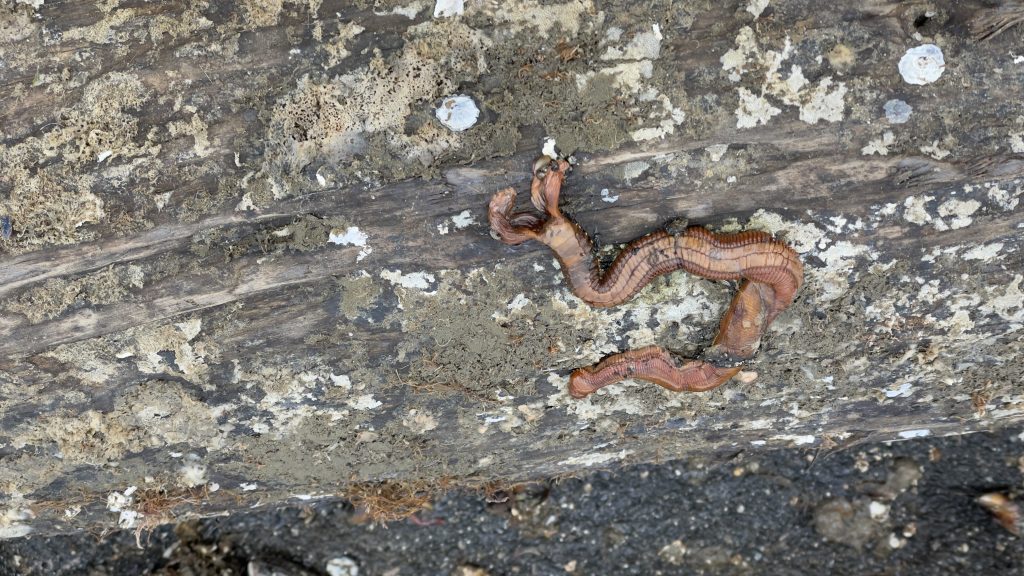
2024-12-25
© Allison J. Gong
One of the rocky intertidal denizens, the pink barnacle Tetraclita rubescens, was there, too:
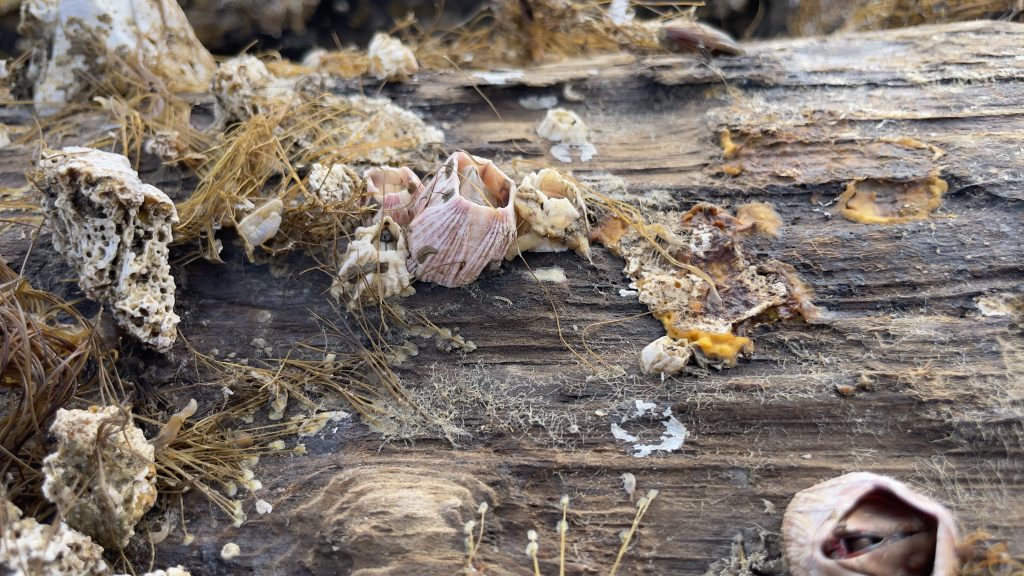
2024-12-25
© Allison J. Gong
To get a feel for how big Balanus nubilus and Tetraclita rubescens are, my left index fingernail measures exactly 10 mm across. That B. nubilus is a big sucker!
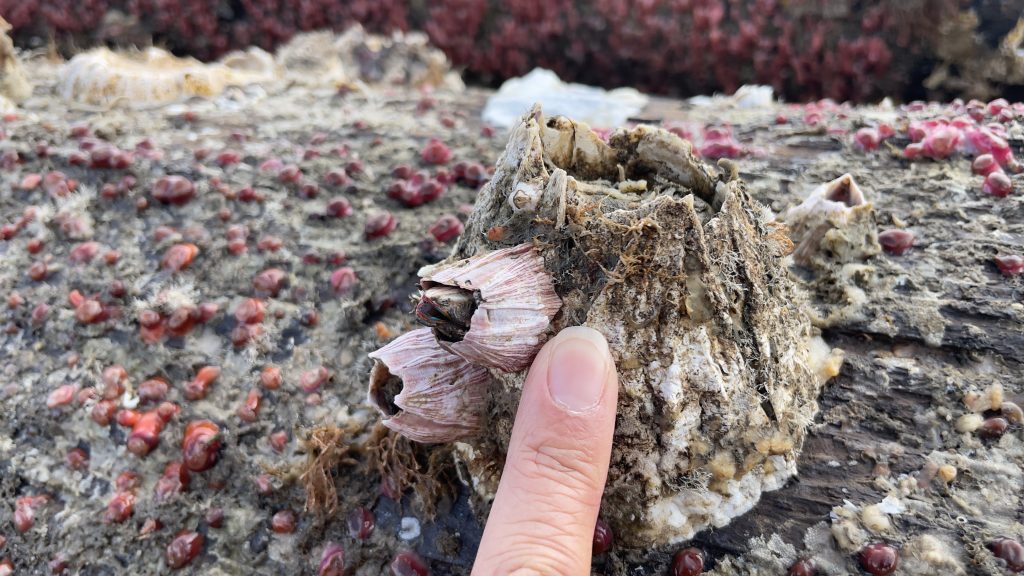
2024-12-25
© Allison J. Gong
Balanus nubilus is a strictly subtidal species that I never see in the intertidal. Tetraclita rubescens occurs in both the intertidal and the subtidal; some of these subtidal specimens were larger than the ones I see in the intertidal. Most sessile marine invertebrates can feed only when they are covered by water, which means that the ones living in the intertidal don’t feed at low tide. Thus the subtidal T. rubescens can get larger than their intertidal conspecifics, simply because they can feed 24/7. We see the same pattern with mussels in the intertidal: those higher up in the mussels’ range are smaller than the ones in the lower part of the range.
Some of the barnacles were still alive. They can close up their shells and wait out a low tide. But sitting out of the water for longer than a day was more than even they could withstand.
Other old friends were there, including many sea anemones. This is the sunburst anemone, Anthopleura sola, looking the way it does when I see it in the intertidal at low tide.
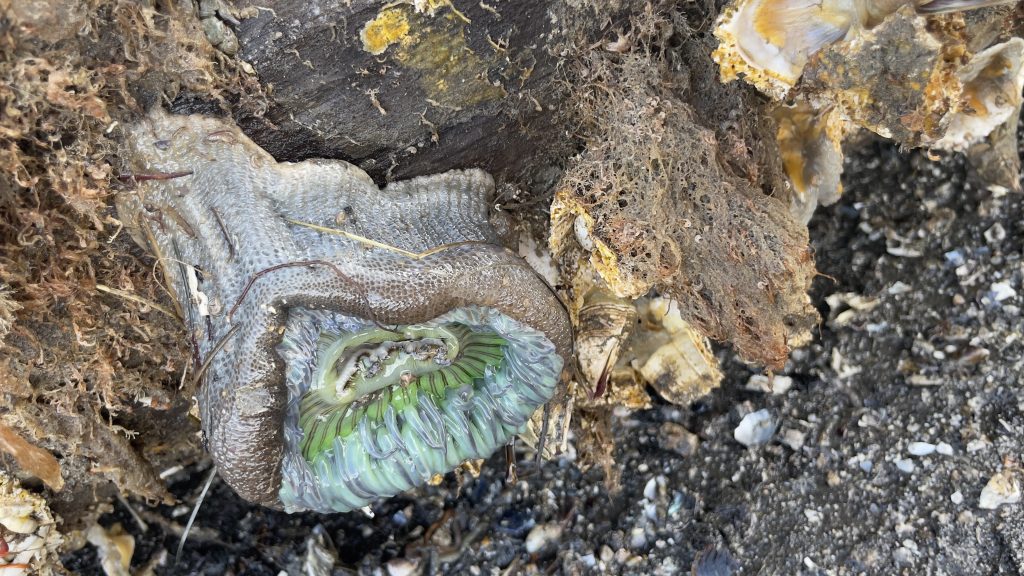
2024-12-25
© Allison J. Gong
Other anemones had been caught in the act of dividing. These would be the cloning anemones, Anthopleura elegantissima.
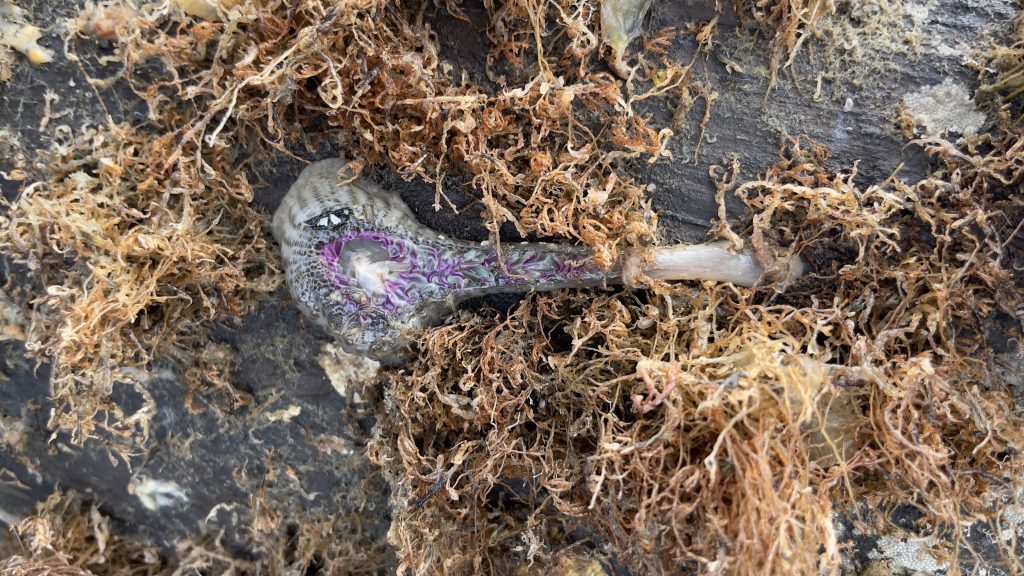
2024-12-25
© Allison J. Gong
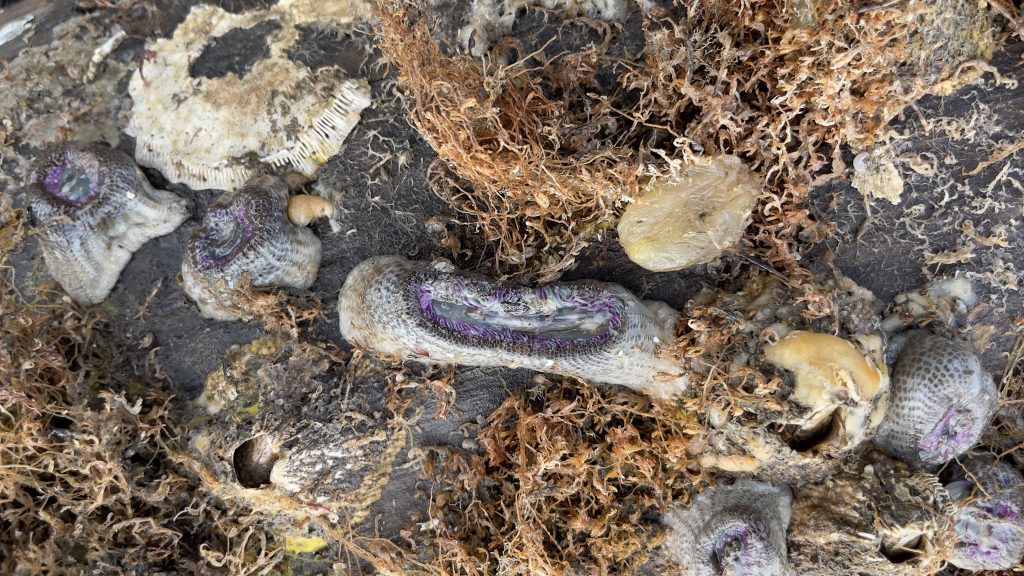
2024-12-25
© Allison J. Gong
Probably the saddest thing was a desiccated red octopus on the pavement. It had probably plopped out of a nook and tried to make its way back to water. Poor little thing.
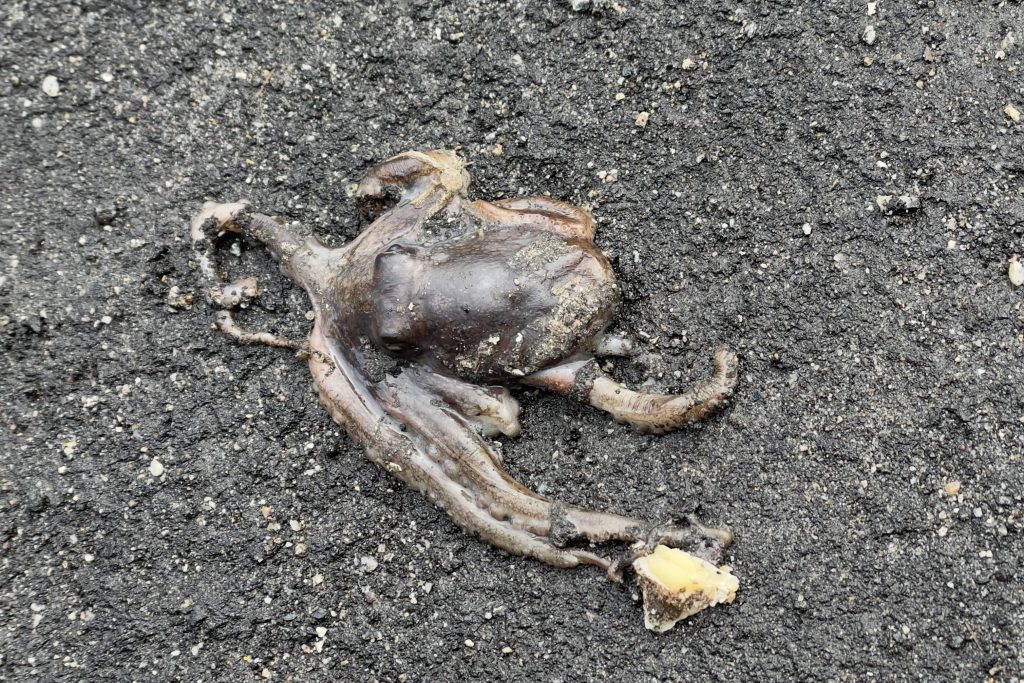
2024-12-25
© Allison J. Gong
The organisms on these pilings were caught in their final moments of life, just as the citizens of Pompeii and Herculaneum were when Mt. Vesuvius erupted in 79 AD. Some of them had tried to escape (the octopus) and some were not quite dead yet (the barnacles), but the inevitable is well, inevitable. At some point the pilings will be removed to the landfill. The same thing happened when the harbor docks were replaced in 2014. I happened to be there with a class and we saw all of the old docks piled up in the parking lot, with all of the attached biota slowly drying up in the sun.
So while there will be reports in the coming days about how many millions of dollars it will take to rebuild the harbor (again) and the pier, let’s not forget that there were other losses that cannot be assigned a dollar value. There is also a potentially major ecological impact of new (again) harbor docks. When the old docks were removed in 2014, they had been covered with a decades-old fouling community. The new docks were pristine new habitat for recruits, and shortly after they were put in I noticed an invasive brown alga, Undaria pinnatifida, which I hadn’t seen before. Undaria is a western North Pacific edible seaweed that is known culinarily as wakame. In recent years it has become one of the most abundant macroalgae in the lower areas of the harbor. The docks that were destroyed this week had been in place for only 10 years or so, and it will be interesting to see how primary succession occurs when new docks are installed. Hmm, that sounds like something I can have my Ecology students document and monitor!

Very glad to know the Scherzo was not badly damaged, but otherwise terrible news for the wharf and harbor. I’m glad that you were there to capture photos to share, as few of us really understand the full impact of such events.